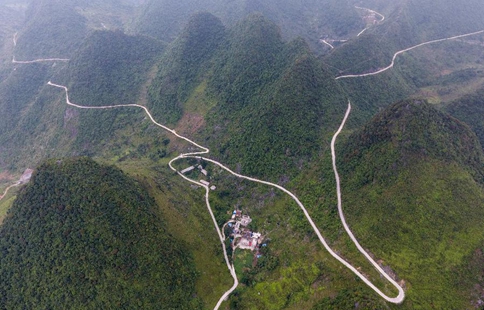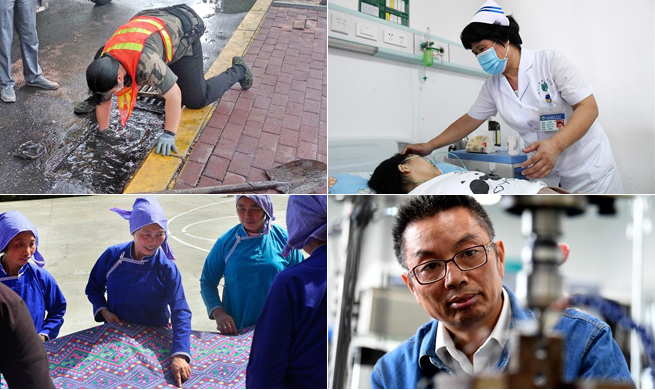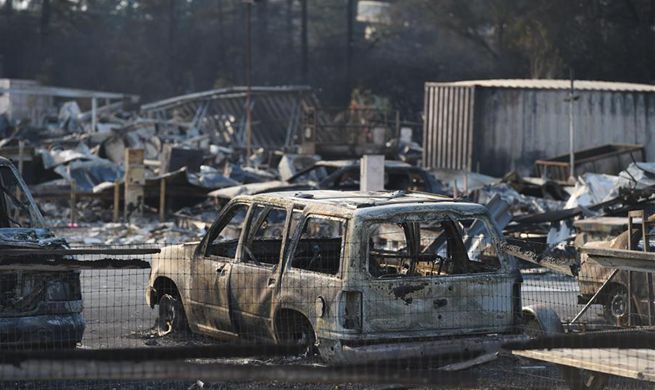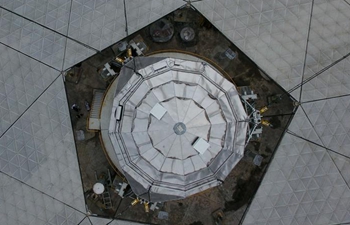MANILA, Oct. 13 (Xinhua) -- The Philippines generates about 35,000 tons of garbage daily, and more than 8,600 tons per day in Metro Manila alone, an Asian Development Bank (ADB) expert said on Friday.
In an article in the Asian Development Blog published on Friday, ADB's Aldrin Plaza of the urban development officer of the Sustainable Development and Climate Change Department said that disposing solid waste poses a big challenge to the Philippine government.
He said a sizable proportion of the refuse is openly burned, further worsening the quality of the city's already heavily polluted air.
"There have been attempts to hold back the tide of rubbish. The 2000 Ecological Solid Waste Management Act (ESWMA) is considered landmark legislation on environmental management," Plaza wrote.
However, Plaza lamented that "many of the law's goals have yet to be achieved."
"The NIMBY (not in my backyard) attitude, weak local government units capacities, and lack of alternatives to landfilling have aggravated the situation," he said.
Metro Manila is now home to more than 12 million people. As with many other megacities in Asia, Plaza said waste collection and disposal is a major environmental issue. "The problem extends beyond the capital," he said.
The 2000 Act, for instance, is considered landmark legislation on environmental management. It aimed to systematically organize and sustainably manage the collection and disposal of municipal solid waste (MSW) in the country.
The law mandated the establishment of MSW collection systems anchored on the so-called 3R formula - reduce, reuse, and recycle - that involves segregation at source and the establishment of intermediate facilities such as materials recovery facilities, which ideally should be established at the barangay (neighborhood) level.
The law also provided specific deadlines for closing unsanitary open dumpsites. "Cities are still dumping waste on open dumpsites," he said.
In 2010, when all open dumpsites should already have been closed as mandated by the law, he said 790 were still operating.
Plaza cited three major obstacles that have contributed to the Philippines' failure to stem the tide of producing garbage.
"The biggest constraint to the establishment of proper MSW disposal facilities is the "not in my back yard" (NIMBY) attitude. It's like saying 'yes, we need dumpsites, but please put them somewhere else,'" Plaza said.
A second obstacle is financing and governance. He said the investment costs and management burden of a comprehensive MSW management system are too burdensome for many cities.
Third, he said the ban on incineration eliminated a viable alternative to landfilling.
The 2000 law solely prescribed engineered sanitary landfills as the acceptable method of final waste disposal, and the 1999 Clean Air Act prohibited incineration for MSW disposal.
The Clean Air Act's stated goal of curbing greenhouse gas emissions is actually hindered by banning incineration.
"Studies have shown that sanitary landfills with methane recovery systems produce 2-to-3 times more carbon dioxide equivalent, sulfur dioxide, and nitrous oxide than incineration-based electricity systems per kWh of power generated," Plaza said.
He said landfills without methane capture are much worse, because the escaping methane is 34 times more harmful to the environment than carbon dioxide.
"It is ironic that the Philippines is the only country in the world that bans incineration for the disposal of MSW. The Dutch city of Rotterdam, for example, has a huge incineration plant right in the middle of the city," he said.
He also mentioned Singapore which has five operating incinerators that process 9,000 tons of waste per day, about the same amount that Metro Manila produces daily.

















